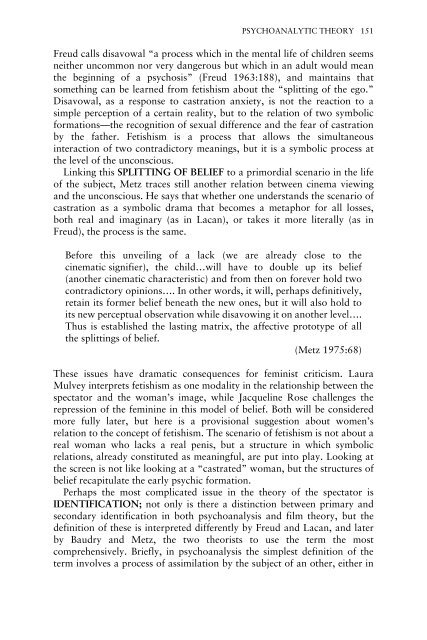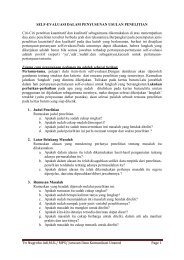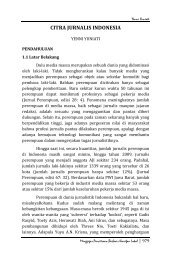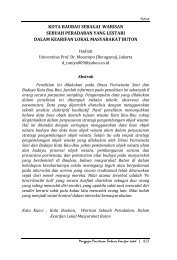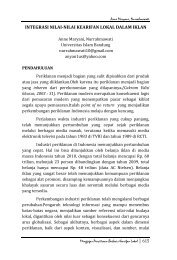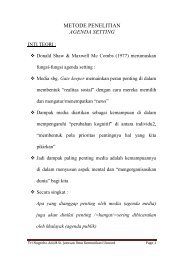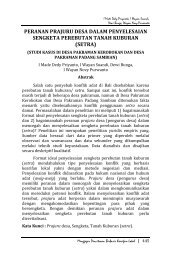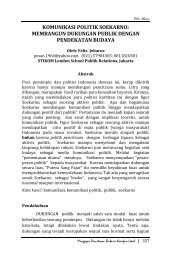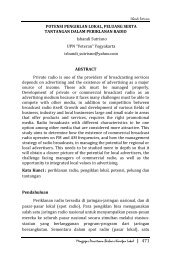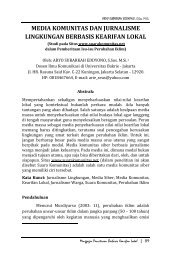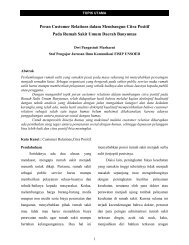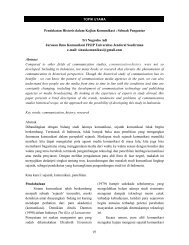New Vocabularies in Film Semiotics
New Vocabularies in Film Semiotics
New Vocabularies in Film Semiotics
Create successful ePaper yourself
Turn your PDF publications into a flip-book with our unique Google optimized e-Paper software.
PSYCHOANALYTIC THEORY 151<br />
Freud calls disavowal “a process which <strong>in</strong> the mental life of children seems<br />
neither uncommon nor very dangerous but which <strong>in</strong> an adult would mean<br />
the beg<strong>in</strong>n<strong>in</strong>g of a psychosis” (Freud 1963:188), and ma<strong>in</strong>ta<strong>in</strong>s that<br />
someth<strong>in</strong>g can be learned from fetishism about the “splitt<strong>in</strong>g of the ego.”<br />
Disavowal, as a response to castration anxiety, is not the reaction to a<br />
simple perception of a certa<strong>in</strong> reality, but to the relation of two symbolic<br />
formations—the recognition of sexual difference and the fear of castration<br />
by the father. Fetishism is a process that allows the simultaneous<br />
<strong>in</strong>teraction of two contradictory mean<strong>in</strong>gs, but it is a symbolic process at<br />
the level of the unconscious.<br />
L<strong>in</strong>k<strong>in</strong>g this SPLITTING OF BELIEF to a primordial scenario <strong>in</strong> the life<br />
of the subject, Metz traces still another relation between c<strong>in</strong>ema view<strong>in</strong>g<br />
and the unconscious. He says that whether one understands the scenario of<br />
castration as a symbolic drama that becomes a metaphor for all losses,<br />
both real and imag<strong>in</strong>ary (as <strong>in</strong> Lacan), or takes it more literally (as <strong>in</strong><br />
Freud), the process is the same.<br />
Before this unveil<strong>in</strong>g of a lack (we are already close to the<br />
c<strong>in</strong>ematic signifier), the child…will have to double up its belief<br />
(another c<strong>in</strong>ematic characteristic) and from then on forever hold two<br />
contradictory op<strong>in</strong>ions…. In other words, it will, perhaps def<strong>in</strong>itively,<br />
reta<strong>in</strong> its former belief beneath the new ones, but it will also hold to<br />
its new perceptual observation while disavow<strong>in</strong>g it on another level….<br />
Thus is established the last<strong>in</strong>g matrix, the affective prototype of all<br />
the splitt<strong>in</strong>gs of belief.<br />
(Metz 1975:68)<br />
These issues have dramatic consequences for fem<strong>in</strong>ist criticism. Laura<br />
Mulvey <strong>in</strong>terprets fetishism as one modality <strong>in</strong> the relationship between the<br />
spectator and the woman’s image, while Jacquel<strong>in</strong>e Rose challenges the<br />
repression of the fem<strong>in</strong><strong>in</strong>e <strong>in</strong> this model of belief. Both will be considered<br />
more fully later, but here is a provisional suggestion about women’s<br />
relation to the concept of fetishism. The scenario of fetishism is not about a<br />
real woman who lacks a real penis, but a structure <strong>in</strong> which symbolic<br />
relations, already constituted as mean<strong>in</strong>gful, are put <strong>in</strong>to play. Look<strong>in</strong>g at<br />
the screen is not like look<strong>in</strong>g at a “castrated” woman, but the structures of<br />
belief recapitulate the early psychic formation.<br />
Perhaps the most complicated issue <strong>in</strong> the theory of the spectator is<br />
IDENTIFICATION; not only is there a dist<strong>in</strong>ction between primary and<br />
secondary identification <strong>in</strong> both psychoanalysis and film theory, but the<br />
def<strong>in</strong>ition of these is <strong>in</strong>terpreted differently by Freud and Lacan, and later<br />
by Baudry and Metz, the two theorists to use the term the most<br />
comprehensively. Briefly, <strong>in</strong> psychoanalysis the simplest def<strong>in</strong>ition of the<br />
term <strong>in</strong>volves a process of assimilation by the subject of an other, either <strong>in</strong>


